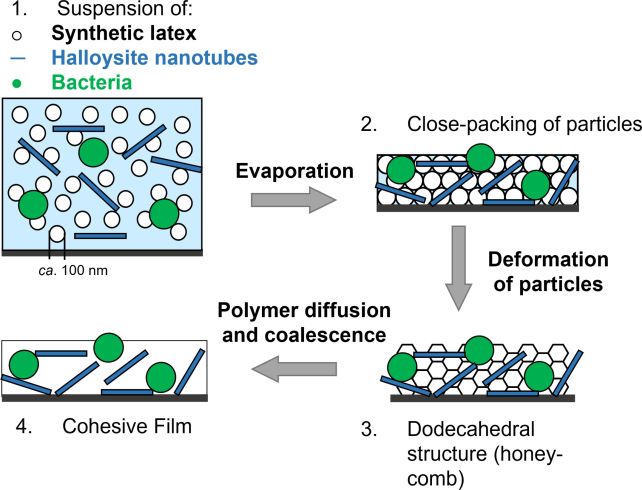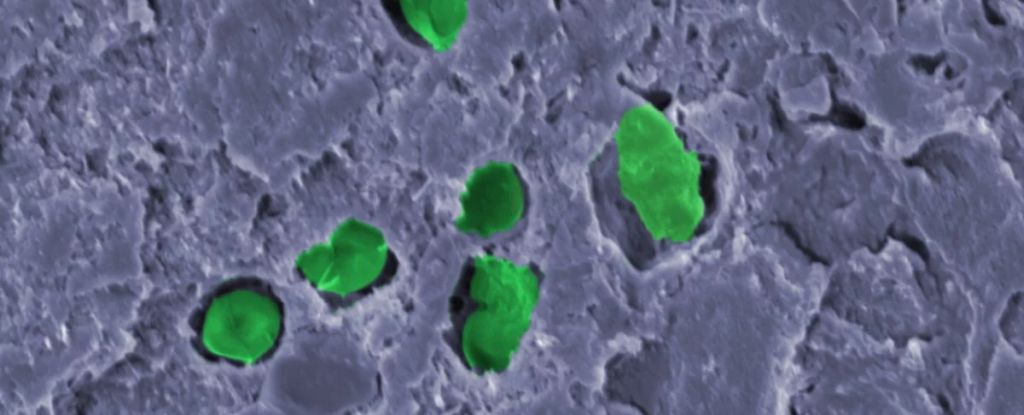Products You May Like
Desert-dwelling bacteria that feed on sunlight, slurp up carbon dioxide, and emit oxygen could be incorporated into paint that supplements the air in a habitat on Mars.
It’s called Chroococcidiopsis cubana, and scientists have developed a biocoating that emits measurable amounts of oxygen on a daily basis while reducing the amount of carbon dioxide in the air around it. This has implications, not just for space travel but here at home on Earth, too, according to a team led by microbiologist Simone Krings of the University of Surrey in the UK.
“With the increase in greenhouse gasses, particularly CO2, in the atmosphere and concerns about water shortages due to rising global temperatures, we need innovative, environmentally friendly, and sustainable materials,” says bacteriologist Suzie Hingley-Wilson of the University of Surrey.
“Mechanically robust, ready-to-use biocoatings, or ‘living paints,’ could help meet these challenges by reducing water consumption in typically water-intensive bioreactor-based processes.”
Chroococcidiopsis is a weird little genus of beasties. If there’s a place on Earth you think no life could possibly find purchase, you’re likely to find a species of this bacterium there. It harnesses a strange kind of photosynthesis that can make the most of extremely low-light conditions, with a back-up survival mechanism for even darker places. It’s been found in the pitch blackness of ultra-deep caves, and in Earth’s lower crust beneath the ocean floor.
Chroococcidiopsis cubana sometimes lives in deserts, in conditions not dissimilar to those on Mars. And, like other cyanobacteria, its metabolism has some desirable properties. The bacterium takes in CO2, which it fixes to transform via photosynthesis into organic compounds, releasing oxygen as part of the process.
Krings and her team wanted to develop a biocoating that harnesses these properties. These are coatings, like paint, into which living bacteria are incorporated in layers. They have to be durable, without containing ingredients that could harm the bacteria therein.

This is more challenging than it might seem: the biocoating matrix needs to be porous, to allow for hydration and cell transport, but mechanically robust, and hard. The team developed a method of mixing latex with nanoclay particles that achieved these properties, safely encapsulating their bacteria.
The next step was to make sure that the paint was working as intended, and that the tiny microbes inside it were continuing to live happy, tiny lives. The team observed their coating for 30 days, performing measurements of oxygen output, and CO2 input.
They found the paint consistently released oxygen at a rate of up to 0.4 grams of oxygen per gram of biomass per day, and that this remained steady for the entire month. That’s up to 400 grams (14 ounces) of oxygen for every kilogram (35 ounces) of paint. In addition, the paint absorbed CO2. The researchers have called their invention Green Living Paint.
That output would probably not be sufficient on its own for a Mars habitat; a team of astronauts living on Mars for a year will need an estimated 500 metric tons of oxygen; but every little bit of oxygen that can be eked in situ on the red planet will reduce the amount of oxygen space missions are going to need to ship there on a spacecraft.
“The photosynthetic Chroococcidiopsis have an extraordinary ability to survive in extreme environments, like droughts and after high levels of UV radiation exposure,” Krings says. “This makes them potential candidates for Mars colonization.”
The research has been published in Microbiology Spectrum.
